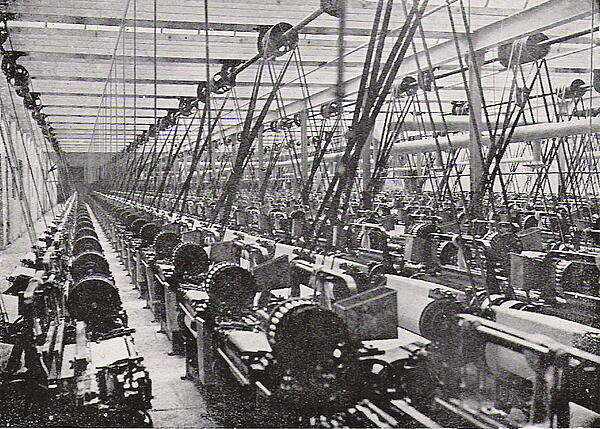The Cotton Industry and the Industrial Revolution
Britain’s cotton industry grew at pace throughout the Industrial Revolution. Cotton was introduced to the country in the 16th century and by the 1700s it had changed the way people dressed. To keep up with increasing demand, cotton mills sprung up across Britain, especially in the north of England.
Thanks to the water coming down from the Pennines, the North of England developed a thriving cotton industries. The fast flowing rivers coming down from the Pennines provided the power supply for the factories, although this would later be supplied by coal power. It also provided fresh, clean water with which to wash the material.
Liverpool also boasted a thriving cotton industry thanks to the strong transport links through its ports.
In 1774 a heavy tax on cotton thread and cloth made in Britain was repealed, further boosting the cotton industry.

Furthermore, numerous inventions and technological development transformed the cotton industry, in turn helping to establish the UK as the cotton ‘workshop of the world’.
One such invention was the ‘Flying Shuttle’, which was created by John Kay in 1733 and enabled cloth to be weaved faster than before. Another was the ‘Spinng Jenny’, which was created by James Hargreaves in 1765 - two decades later and the number of threads that could spun by a single machine increased from six to 80.
‘Water Frame’, patented by Richard Arkwright in 1769, embraced waterpower, but it also produced a higher quality thread than Hargreaves’ spinning jenny.
Thanks to Crompton’s ‘Mule’ in 1779, and Boulton and Watt’s steam engine a few years later, the industry was changed dramatically.
Dyes and chemical bleaches were introduced in the 1800s, which meant that factories would also colour the cotton they were treating. And finally, in 1812, when the first efficient weaving machine was invented in the form of Robert’s Power Loom, all stages in the making of cotton could now be done in a single factory.
All these inventions had a major impact in the amount of cotton produced in Great Britain:
- 1770 - the cotton in Britain was worth around £600,000
- 1805 - £10.5 million
- 1870 - £38.8 million
To compare, the same century saw wool increase in value from £7 million to £25.4 million and silk from £1 million to £8 million. In the city of Manchester alone, the number of cotton mills in existence increased dramatically; there were just two mills in 1790, by 1821 this rose to 66.
While some profited from the cotton industry, many workers were forced to work in dangerous conditions and for low pay.
See also: Factories in the Industrial Revolution
MLA Citation/Reference
"The Cotton Industry and the Industrial Revolution". HistoryLearning.com. 2026. Web.
